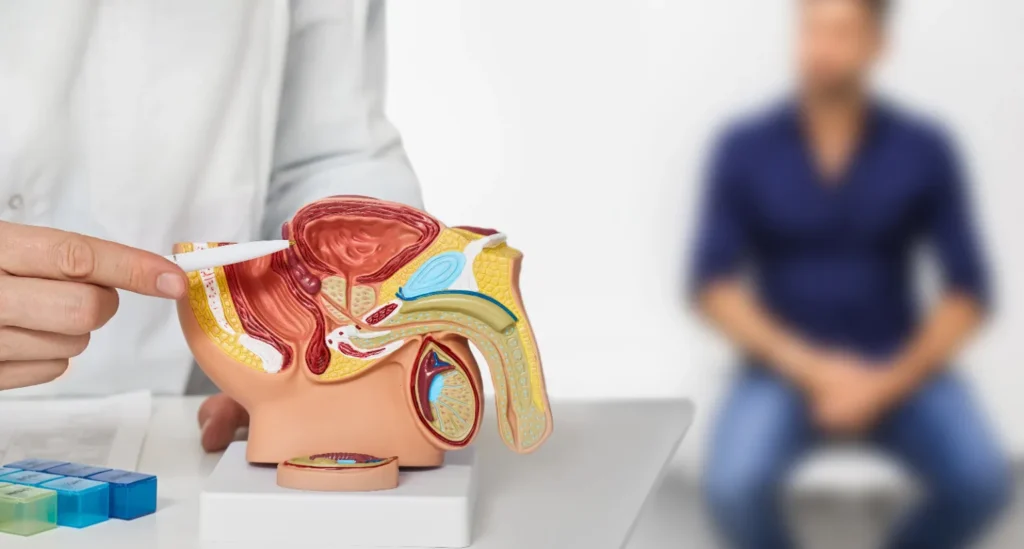“Most men do not know the importance of the prostate, nor its function, so they do not distinguish the symptoms of when it is inflamed. This is delicate because prostate cancer is one of the most common diseases, so you have to pay attention to any discomfort you have after the age of 50,” says urologist Alejandro Aldana.
The prostate is part of the male reproductive system. It is a walnut-shaped gland located below the bladder and in front of the rectum. It surrounds the urethra, which is the tube that carries urine to the bladder and then to the outside. Its functions include the production of semen, along with the testicles and seminal vesicles.
It also produces prostatic fluid, which serves to protect sperm and promote their agility and mobility to fertilize the egg, as well as protect nearby organs from any bacteria or germs from the outside.
The size of this gland is small, however, it increases with age. Therefore, it is recommended that men over 50 years of age undergo regular medical check-ups to avoid any disease and problems related to prostate inflammation.
What causes prostate inflammation?
The prostate surrounds the urethra, so when it gets bigger (swollen), it presses on the urethra and often obstructs it. This makes it difficult for urine to pass and, therefore, the most common symptom is difficulty urinating, says Edgar Gonzáles, an internist.
Prostate inflammation can be caused by three most common diseases:
- Prostatitis: This is caused by bacteria that cause an infection that inflames the prostate. Most patients do not have symptoms, but when they do, they may experience pain or a burning sensation when urinating, difficulty urinating (such as dribbling), an urgent need to urinate, and very yellow urine.
- Benign prostatic hyperplasia (BPH): Prostate enlargement may begin between the ages of 45 and 50. Because of inflammation, the urethra often becomes blocked, causing difficulty urinating, incontinence, needing to go to the bathroom two or more times a night, and a weak urine stream.
- Prostate cancer: This occurs when cells begin to grow out of control. Symptoms appear at an advanced stage, but the most common are pain or burning when urinating, blood in the urine or semen, pain when ejaculating, and persistent pain in the back and pelvis.
Symptoms of an inflamed prostate
The cause of the prostate inflammation will determine the symptoms, but the most common ones are having a weak or slow urinary flow, feeling like the bladder has not been completely emptied and still having the urge to urinate but not evacuating anything, having an urgent need to urinate or having frequent urination, constantly getting up at night to go to the bathroom (more than two or three times), needing to strain when urinating and having pain.
You may also have a urinary stream that starts and then stops, or difficulty starting to urinate.
“When we notice that it is harder for us to urinate and finish urinating, we should pay attention to other symptoms. Also, when we feel burning or pain when urinating. These are the first signs of inflammation. Remember that prostatitis and BPH are common diseases, so at the first sign of discomfort, we should consult a doctor. If you are over 45 years old, then you should go to the urologist regularly,” says specialist Aldana.
Regardless of age, it is advisable to go to the doctor when you have urgent urination, the need to urinate constantly, especially at night; difficulty urinating, or seeing blood in your urine or semen.
Diagnosis and treatment
“Most men do not go to the urologist to avoid a diagnosis by digital rectal examination. However, other methods help us to know what the disease is, for example, a urinary ultrasound, urine and semen analysis, as well as blood tests, among others,” says Gonzáles.
Through the digital rectal exam, where the doctor inserts a lubricated and padded finger into the rectum to feel the prostate, one can get an idea of the size and condition of the prostate, which is why it is the most commonly used.
Treatment will depend on the disease, its cause, and symptoms. Discomfort is usually treated with medications, lifestyle changes, and sometimes surgery. People over 60 are more likely to have mild symptoms which lessen with mild care.

